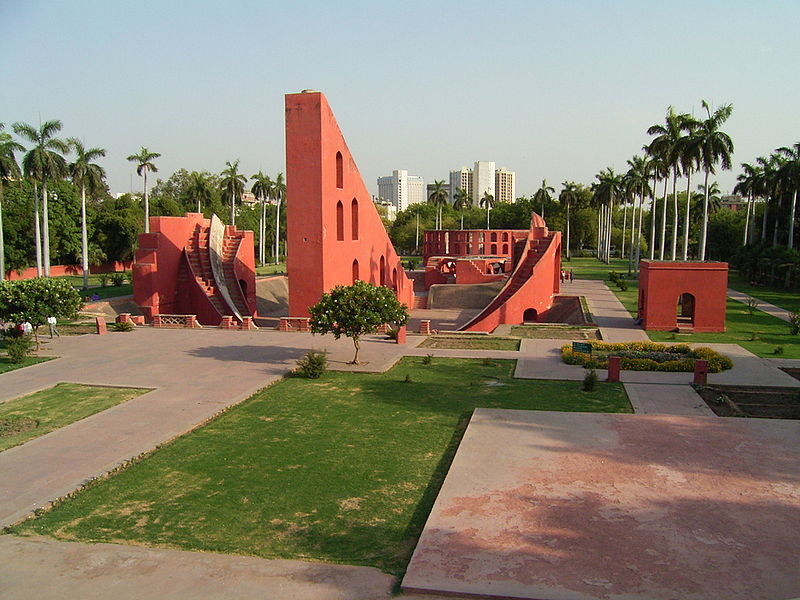A Jantar Mantar is an observatory having an assembly of astronomical tools built using simple building materials like stones, bricks and mortar. These are so precisely designed astronomical instruments that can be used with naked eyes. Originally there were 5 Jantar Mantar but the one at Mathura was damaged before the 1857 revolt. The other four are still existing in Delhi, Jaipur, Varanasi and Ujjain. The Jantar Mantar at Jaipur has been included in UNESCO’s World Heritage sites. All of these five Jantar Mantars were constructed by Raja Sawai Jai Singh-II of Jaipur, between 1724 -1735 CE.
Jaipur’s assembly of astronomical instruments at Jantar Mantar has the equinoctial sundial consisting of a gigantic triangular gnomon with the hypotenuse parallel to the Earth’s axis. On either side of the gnomon is a quadrant of a circle, parallel to the plane of the equator. The instrument can be used with an accuracy of 2 seconds by a “skilled observer” to measure the time of day and the declination of the Sun and the other heavenly bodies. It is the world’s largest stone sundial, known as the Vrihat Samrat Yantra. The Jantar Mantar at Delhi has a solar dial that can be used to determine the time at 5 continents.
The Jantar Mantars have various instruments like Samrat Yantra, Jai Prakash, Ram Yantra and Niyati Chakra; each of which is used for various astronomical calculations. The primary purpose of the observatory was to compile astronomical tables and to predict the times and movements of the sun, moon and other planets.
Following is the List of such astronomical Instruments at Jantar Mantars –
- Samrat Yantra
- Jai Prakash Yantra
- Disha Yantra
- Rama Yantra
- Chakra Yantra
- Rashiwalya Yantra
- Dingash Yantra
- Utaansh Yantra
